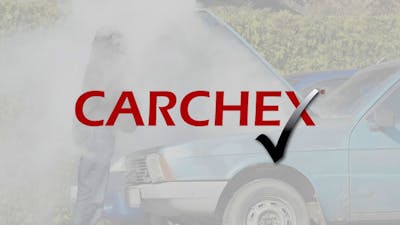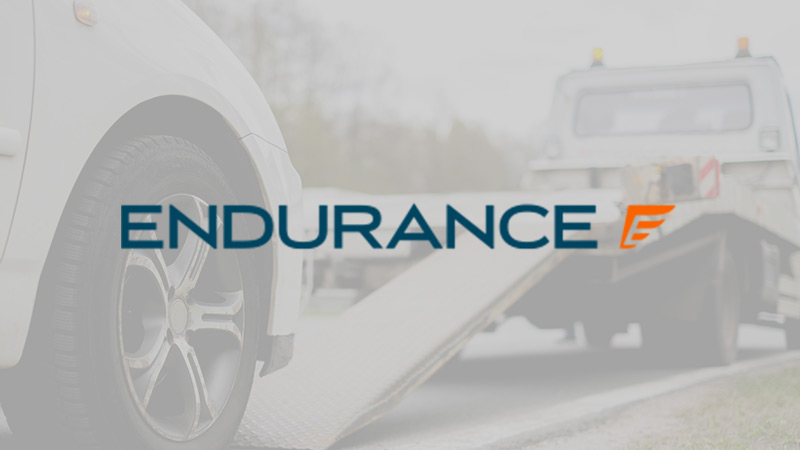Hyundai Maintenance: Cost, Repairs and Schedule
Two often-overlooked costs of owning a vehicle are maintenance and repairs. Maintenance includes scheduled work you do to keep your vehicle operating properly. Brake fluid changes, brake pad and rotor changes, tire rotations and tire replacements, 12-V battery replacements, and filter changes make up the majority of maintenance costs on modern vehicles. With timing belts lasting over 70,000 miles, spark plugs lasting over 100,000 miles, distributor caps gone, and no more power steering fluid to change, most cars today are relatively maintenance-free compared to vehicles from the old days.
Popular Warranty Providers
Repairs are a different type of cost you must consider. These are unexpected and unplanned jobs required to fix a broken vehicle out of its warranty period. Good real-world examples of common trouble areas are alternators, starters, and AC compressors. Wheel bearing replacements, strut and shock replacements, and ball joint repairs are typical of the suspension repairs many cars will require, even electric vehicles.
Given enough time and mileage, every part of every car will eventually fail. We will ignore the end-of-life type of failures and repairs that very old, used-up cars will have. Large repair items such as a complete engine failure or transmission failure can cost as much as $5,000. These are often the last issue in an older car’s long list of pricey repairs before it is retired and recycled. In this story we will focus on the maintenance and repairs needed to keep a modern Hyundai vehicle running up to and beyond the 100,000 mile mark.
Hyundai Cost and Maintenance - Reliability
Hyundai had humble beginnings as a brand but has evolved into one of the most trusted brands for reliability and quality. Hyundai was ranked third overall in the 2022 J.D. Power Vehicle Dependability Study (VDS). In addition, the Sonata sedan and Santa Fe SUV earned segment awards. Consumer Reports gives the Hyundai brand mixed rankings. In its 2022 list of the Most Reliable Brands, Hyundai ranks 13th (trending down).
Hyundai’s Unique Repair Cost Advantage - Its Warranty
A discussion of Hyundai vehicles’ cost to repair and maintain must include an upfront acknowledgment that the company offers the very best warranty in America. With a five-year / 60,000-mile New Car Limited Warranty and a whopping 10-year / 100,000-mile Powertrain Warranty, Hyundai offers a warranty nearly twice the duration of most of its competitors. One small detail is that this warranty is for the first owner only, and it is somewhat shorter in duration for subsequent owners.
Hyundai Included Maintenance
Hyundai offers three years of included maintenance in the price of its new vehicles. Hyundai was a trailblazer in this regard. None of Hyundai’s competitors can match the combination of included maintenance and long warranty the company offers. These two factors should result in a Hyundai vehicle having a lower cost to maintain and repair than a similar vehicle from a different brand (even Kia).
Here is what Hyundai’s complimentary maintenance program includes for the first 3-year / 36,000-miles:
- Engine oil and oil filter changes
- Tire rotations
- Multi-point inspection
- Hyundai Genuine Oil filters & Hyundai Recommended Oil
Hyundai Recommended Maintenance Schedule
Hyundai’s top-selling model is its five-passenger Tucson crossover SUV. We have listed Hyundai’s recommended service intervals below for normal driving. Consult your owner’s manual to see if severe driving duty requires additional service or more frequent servicing of the vehicle. Severe duty maintenance can include differential, transfer case, and transmission fluids.
One tip; You only need to do the maintenance in the manual. Some dealers and independent shops will suggest other work at additional cost. Don’t fall for things like the fluid flush scam or nitrogen for your tires.
Hyundai Recommended Maintenance Schedule Chart
| Maintenance Job | Every 8K Miles | Every 16K Miles | Every 24K Miles | Every 48K Miles | Every 96K Miles | Every 120K Miles |
|---|
Typical Costs For Routine Maintenance Jobs
What you pay for maintenance depends on your specific make and model and, to a large degree, where you have it serviced. Dealers typically charge 10% to 30% more for the same service you would get at a trusted local shop. The guide below is intended to help create a budget for maintenance work commonly done on most vehicles.
| Maintenance Job | Approximate Cost Range |
|---|
What Are “Various Inspections?”
Our chart above lists “Various Inspections & Minor Adjustments” as one of the many maintenance items required to properly maintain a vehicle. These include common sense things like a visual brake inspection, hands-on suspension component checks, visual inspection of hoses and belts, checking that coolant, transmission, and differential oil levels are at the proper setpoints, and re-torquing specific bolts on the vehicle, such as those on the propeller shaft (driveshaft). Most shops will do these things for a nominal fee. However, dealerships tend to inflate the cost of these inspections and minor adjustments at the 15K intervals. Often to the tune of hundreds of dollars.
| Wear Item Service | Estimated Interval Miles | Budget Cost Range |
|---|
~ means approximately.
Consumable Parts Maintenance For All Vehicles
All vehicles have consumable parts that require maintenance and replacement at certain points in the vehicle’s lifespan. There is no set time for many of these, but rather, they are done when needed.
Here is a quick rundown of some common items that you should budget for:
- Wiper Blades - Expect to replace wiper blades every 10,000 to 20,000 miles. You can do it yourself or pay the shop double the parts cost to have it done. Budget $20 to $50.
- 12-V Battery - Your car’s battery will last from three to six years on average, depending on how hot or cold your area is. Heat kills batteries, and they then pass away on a cold morning. AAA offers onsite battery replacement for most cars in most areas. Budget $200.
- Brakes - Your brakes will wear out in pairs. Front pair and rear pair. They may all coincidentally wear out at once, but that is uncommon. Budget $400 to $750 per pair. This includes rotors, pads, and minor parts, plus labor. Calipers and other brake components fail less commonly.
- Brake Fluid Changes - Most manufacturers and all shops will recommend that you change your brake fluid periodically. 30,000 miles is a typical interval. Budget about $200 for this. However, it is also often done during a brake pad and rotor replacement, so you may not need it as often as every 30,000 if you also service the brakes.
- 4-Wheel Alignment - Your suspension undergoes slight changes as your car ages. For this reason, a shop will recommend a 4-wheel alignment at certain intervals. It is also smart to do this when purchasing new tires so that the new ones will wear properly. Budget $125 for this service. It should not be needed more than every 30,000 miles unless you travel off-pavement frequently.
- Tires - Tires can wear out on their own by losing tread, being damaged, or by being too old and suffering from environmental degradation. Budget for tires on a typical mainstream vehicle every 40,000 to 50,000 miles or so, and more frequently for EVs and sporty vehicles. Your budget will depend on your vehicle, but around $1,000 is a typical cost, including the mounting, balancing, and disposal fee of your old tires. To maximize the lifespan of your tires, always keep them properly inflated and rotate them according to the manufacturer’s suggested interval.
- Belts and Hoses - The accessory belt in your engine and the hoses that carry coolant and other fluids don’t have specific replacement intervals, but they do wear. Expect to replace the belts and hoses in your vehicle at least once every 100K miles. Prices vary according to the vehicle and the needed part. Budget $300 per vehicle per 100K usage.
- Timing Belts - A very critical part of some engines is a rubber/composite engine valve timing belt. This belt typically lasts between 70K and 90K miles or about 7 to 9 years. Replacement is costly and includes a water pump change in most vehicles. Budget $750 to $1,000 for this once every 100K service. Note that many vehicles use a chain instead, so your vehicle may not have this belt. Timing chains are designed to last the life of the vehicle and save you money.
- Transmission Fluid Changes - By Car Talk’s count, there are now over five different common transmissions in use in modern vehicles. Geared, CVT, eCVT, DSG, and manual. Each has its own needs, and each manufacturer has their own schedule for service and fluid replacements. Consult your manual. Many modern vehicles have sealed transmissions meaning they do not require fluid changes. If your vehicle does require a transmission fluid change, budget $350 to $650 for this service.
Common Vehicle Repair Examples
Many components in a vehicle are designed to last for the lifetime of the car, but many do not. Our chart above includes some commonly repaired and replaced parts of modern vehicles. These should only be a once-per-ownership event. If you find that your vehicle requires multiple repairs of the same type, it may be time to look for a new car.
| Common Repair Type | Approximate Cost (varies by make and model) |
|---|
How Much Does a Hyundai Maintenance Plan Cost?
Hyundai offers two prepaid maintenance plans. The first is called Maintenance Wrap. This is basically just an oil change and tire rotation plan. The second is more comprehensive and is called Hyundai Maintenance Service Wrap. Here’s how the two compare:
Hyundai’s prepaid maintenance plans pick up where the three-year 36,000-mile included maintenance leaves off. They can be extended to up to 7 years/105,000 miles. The plans are also transferable to a subsequent owner if you sell, and they are applicable at any Hyundai dealer. Be wary of dealers who sell plans only good at their specific location.
How Much Do Hyundai Prepaid Maintenance Plans Cost?
We phoned Boston Metro area Hyundai dealers to ask about prepaid maintenance plan pricing. The dealers were reluctant to discuss the pricing over the phone and asked if we could come in to discuss buying a new vehicle. They also wanted a VIN in order to create pricing for us. One dealer would create pricing using a 2022 Tucson in stock as the example vehicle.
Here are the prices we obtained for Hyundai prepaid maintenance plans:
Hyundai Maintenance Wrap
- Duration - Starts after included maintenance ends and runs up until 84 months or 96,000 miles, whichever comes first.
- Price - $1,578
Hyundai Maintenance Service Wrap
- Duration - Starts after included maintenance ends and runs up until 84 months or 96,000 miles, whichever comes first.
- Price - $1,988
Common Hyundai Problems and Repairs
Hyundai vehicles sold new today have a good reputation. However, Hyundai went through a tough period due to engine defects and failures. So many failures that the U.S. government got involved. The resulting recalls cost Hyundai billions, and owners struggled to remain loyal to the brand. Those considering a used Hyundai should look carefully into this issue, and we recommend avoiding affected models and years.
When Hyundai first switched to a dual-clutch automatic transmission, the company had many dissatisfied customers. The transmissions felt odd and would sometimes overheat. “All perfectly normal,” was Hyundai’s response, and the company even made a video to help owners get over the bad feelings they had about the cars.
Avoiding an engine and transmission altogether and buying an electrically-powered Hyundai sounded great to many shoppers. However, Hyundai has also had problems with its EV powertrains.
Is a Hyundai Extended Warranty Worth It?
Extended warranties can help a person on a tight budget to manage large unexpected repair costs. While extended warranties make sense for some brands and models, first owners of a Hyundai should skip buying an aftermarket extended warranty. The reason is that the car is already covered for 100,000 miles or 10 years. Many Hyundai vehicles are closing on being fully depreciated beyond this point. Purchasing a pricey extended warranty is not a wise decision.
If you have purchased a previously owned Hyundai that came with a hard copy of every required maintenance visit, an extended warranty is a consideration.
Our Recommendations
Due to its outstanding warranty for the original owner plus three years of included maintenance, Hyundai is a brand that makes good sense to purchase new. Hyundai is a mainstream brand with very competitively-priced vehicles in most segments. The value proposition is great for first owners.
Buying a used Hyundai is no worse than buying any other mainstream brand with slightly higher-than-average reliability rankings. Do so knowing that you will need to repair and maintain the vehicle and create a budget for doing so.
Our Methodology For Best Warranty Providers
Car Talk has spent the last two years diving deeply into the warranties industry for the benefit of our readership and long-time listeners. Our process for deciding on the best warranty companies is exceptionally thorough, involving in-depth research and our unique secret shopper initiative. We compiled over 50 data points across all reviewed companies to refine and inform our selection process. Car Talk reviewed the following important criteria for each company:
- Consumer Satisfaction: Cross-referencing multiple trusted resources to pull our fair and balanced customer reviews.
- Cost: Utilizing our secret shopper initiative, we got comparable quotes across all companies so we can validly compare pricing.
- Coverage and Offerings: Our research team delved into the coverage and offerings for each company, comparing what is available, including extras and discounts.
- Official Ratings: We consulted a wide range of verified review sites to extrapolate a ratings score for each.
Read more on the Best Warranty Companies in the industry here.










